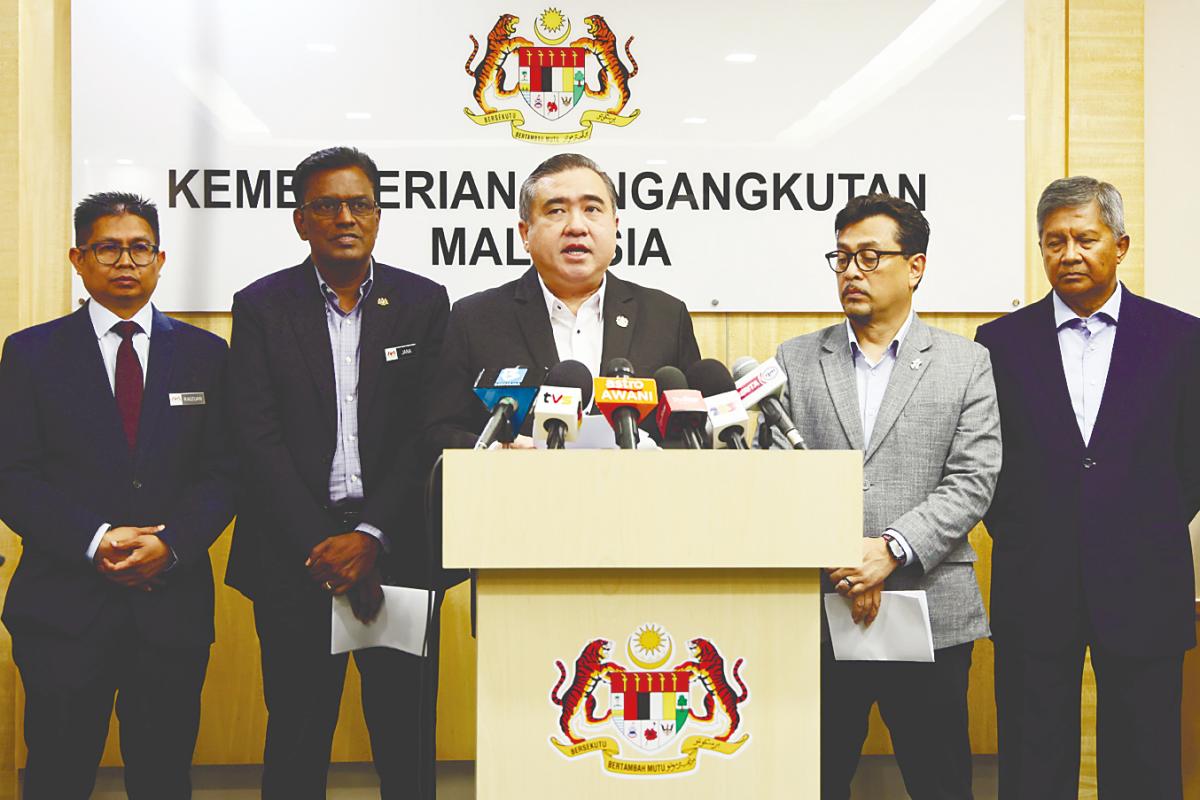PUTRAJAYA: The Civil Aviation Authority of Malaysia (CAAM) will transition into an independent statutory body effective Aug 1, with separate remuneration and exemption from the government.
Transport Minister Anthony Loke Siew Fook said the government has strengthened the regulatory structure and development of the national aviation industry by transitioning CAAM into a Statutory Body with Separated and Exempted Remuneration (BBDSB), and by rationalising CAAM and the Malaysian Aviation Commission (Mavcom).
He said this change will save the government between RM150 million and RM200 million annually and between RM1.5 billion and RM2 billion over the next 10 years.
With this rationalisation, CAAM will take over the economic regulatory functions previously carried out by Mavcom, making CAAM the sole regulatory body for the aviation industry, encompassing technical, safety, and economic aspects.
Loke noted that this decision by the government will grant CAAM autonomy and flexibility in financial governance, human resource management and the ability to make strategic decisions. Additionally, CAAM will have the capacity to plan and implement more efficient resource management strategies in line with international best practices.
“The estimated revenue for CAAM this year is about RM420 million. Previously, our annual revenue was only in the region of RM100 million to RM110 million.
“Given these figures, it is clear that CAAM could not survive on its own. That is why, until now, it has required an annual injection of at least RM150 million to RM200 million from the government to keep its operations running – and that is before accounting for the maintenance of our air traffic control towers, other facilities, or any development projects.
“Now, our estimated revenue for this year stands at RM400 million. We have already collected about RM150 million in just the first five months, exceeding the total revenue for the entire previous year.
“This strong performance has given us the confidence that CAAM will become financially independent and sustainable. This financial sustainability is also one of the critical conditions set by the Cabinet and the Public Service Department for granting CAAM its status as a BBDSD,” he told reporters in a briefing today.
Loke said this initiative is part of the government’s current reform agenda and policy direction to improve service delivery efficiency and to centralise government institutions with overlapping roles.
Through this rationalisation, it establishes a solid foundation for CAAM to drive the growth of the aviation industry towards a progressive and sustainable future, supporting Malaysia’s goal to become a regional aviation hub.
This capability is also crucial for CAAM’s efforts to retain and attract highly skilled talent in technical fields, especially qualified technical personnel who are critical in ensuring the safety and security of the national aviation industry.
Loke said this sector requires a workforce that is not only qualified but also highly skilled and experienced, in compliance with the requirements of the International Civil Aviation Organization.
“With this significant increase in revenue, CAAM will achieve financial independence and gain the capacity to offer more competitive remuneration, particularly for our technical personnel. This is a critical step forward, as our inability to compensate our qualified technical staff at market rates was a key factor in CAAM’s previous downgrade from Category 1 to Category 2 by the US Federal Aviation Administration,“ Loke said.
The audit findings at that time made it clear that competitive salaries are essential for talent retention, he disclosed.
“Now, with improved financial standing, we are in a much stronger position to attract and retain top-tier technical talent. Our objective is not only to secure the best-qualified technical personnel but also to invest in the development of our air traffic controllers, enhancing their skills and operational efficiency.
“This approach aligns with our commitment to building a robust and sustainable workforce for the future of Malaysia’s aviation industry,” the minister said.
Loke assured all Mavcom employees that they will have the opportunity to transition into roles within CAAM following the merger.
He emphasised that the restructuring process will be managed systematically and with complete transparency, in line with established governance principles. Additionally, a business continuity plan has been developed and will be shared with impacted staff through dedicated internal briefings.
Currently, Mavcom employs 57 personnel, all of whom will be considered for positions at CAAM as part of the merger process.









